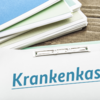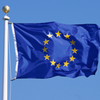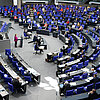FAQ on the new Protection against Infections Act
When does the new Protection against Infections Act take effect?
The bill was adopted by the Federal Cabinet on 13 April 2021 and by the German Bundestag on 21 April 2021. The Bundesrat discussed the bill on 22 April 2021. The act enters into force on 23 April. Based on an assessment of the incidence rates over the past three days, all districts and municipalities will publish the rules that will apply in their area on the next day. The act thus becomes effective on 24 April 2021.
What’s changed?
The federal “emergency brake” comes into force in all districts where the incidence rate has consistently been above 100 new infections per 100,000 inhabitants in the past 7 days (the decisive factor here are the figures recorded by the Robert Koch Institute). That means: If the incidence rate is higher than 100 on 3 consecutive days, the emergency measures set out in the Protection Against Infections Act apply 2 days later. When the incidence rate is higher than 165, schools must close (no more classroom-based learning), as must day-care centres, except for emergency childcare. If the 7-day incidence rate is lower than 100 or 165 respectively on 5 consecutive working days, the emergency restrictions are lifted 2 days later.
Where can you check the official incidence rates?
Here you will find an overview of the incidence rates in the districts and municipalities: www.rki.de/inzidenzen. The cities of Berlin and Hamburg are treated in the same way as rural districts, which means that the incidence rate in the entire city is the decisive factor, not that of the city districts.
What you can and cannot do if the incidence rate is above 100
- You must not socialise with more than one person you do not live with. Meetings involving 1 household plus 1 person may consist of a maximum of 5 people, not counting children under the age of 14 from the 2 households.
- There is a curfew from 22:00 to 05:00, when you may only be outdoors in an emergency, to go to work or to walk the dog, for instance. Between 22:00 and 24:00 you may go for a walk or jog on your own.
- During the day, you may exercise on your own, with one other person or with people you live with. This does not apply to professional athletes. Professional sport events will be held in empty stadiums. The above-mentioned restriction does not apply to groups of up to five children exercising outdoors, provided they maintain the necessary distance. Coaches need to get a test in advance, where appropriate.
- You must wear a face covering (FFP2 mask or similar) on any means of public transport, including taxis. Furthermore, passenger numbers on public transport should be less than half of capacity.
- The Federal Government may adopt ordinances to introduce further measures, specifications or exemptions. Such ordinances require the consent of the German Bundestag and Bundesrat.
Incidence rates of over 100 – what this means for businesses and venues
- Leisure facilities, saunas, tanning studios, gyms, theatres, opera houses, concert halls etc. as well as retail shops must close.
- The following retail outlets are not closed: open-air food markets, food shops, beverage shops, health food shops, specialist baby equipment stores, pharmacies, medical supply shops, drugstores, opticians, hearing-aid providers, petrol stations, newsagents, bookshops, flower shops, pet supply stores, animal feed stores, garden centres, and wholesalers. They may only sell their usual assortment of products. Distancing rules must be respected and customers must cover their faces using a surgical mask or FFP2 (or similar) mask.
- Shops may offer Click&Collect services. If the 7-day incidence rate is below 150, customers may also make an appointment for in-store shopping (known in Germany as “Click&Meet”) provided that they have a negative test result that is no more than 24 hours old.
- The open-air areas of zoos and botanical gardens may open, provided they have health and safety protocols in place. Visitors must present a negative test result. This rule does not apply to children below the age of six.
- Restaurants and other catering businesses may only offer takeaways.
- Overnight accommodation for purposes of tourism is not allowed.
- Repair shops, post offices, banks and launderettes may open.
- Personal care services are not permitted, with the exception of medical, therapeutic or chaplaincy services. Also, hairdressers and chiropodists may open, provided employees and clients use FFP2 masks or similar and customers present a negative test result.
Is a curfew a proportionate measure for fighting the pandemic?
When the 7-day incidence rate is higher than 100, a curfew is an important means of effectively preventing the spread of infection. Numerous scientific studies back this up (link to studies).
The curfew is limited solely to the period in which the “emergency brake” is in place. It cannot be imposed as a preventive measure.
Several courts have already confirmed that a curfew is legally acceptable. Curfews are not classed as a deprivation of liberty. They simply limit the use of public space during normal rest and sleeping times. People are still permitted to leave their homes if they have a valid reason to do so.
Why are parents and their children up to the age of 14 not allowed to visit grandparents together, and why are cohabiting couples not allowed to visit another household together?
The coronavirus SARS-CoV-2 is mainly transmitted through respiratory air. The more people meet, the higher the risk of infection. Meetings in private homes are particularly challenging in terms of making sure that everyone involved complies with social distancing measures. This is why meetings are limited to the members of one household with a maximum of one person from another household. This measure is particularly effective in breaking chains of infection.
Children up to the age of 14 are not included in the numbers so that meetings permitted between adults can also take place in the presence of their children. This means that social contact is not limited excessively.
Does the new act have a strategy for reopening?
Yes, the act includes reopening strategies. The “emergency brake” is applied when there has been a stable incidence rate of 100 or more new cases per 100,000 members of the population in the last 7 days. If the 7-day incidence rate is lower than 100 on 5 consecutive days, the emergency restrictions are lifted 2 days later.
What is the situation for schools?
- Where classroom-based learning is offered, pupils and teachers must be tested twice per week. The federal states are responsible for procuring and carrying out the tests.
- If the incidence rate is over 100 for 3 consecutive days, schools must change to an alternating group model with smaller class sizes. The federal states or the individual schools decide on what form this model is to take (daily, weekly etc.).
- If the 7-day incidence rate is consistently above 165, then schools, vocational schools, universities, non-school adult education institutions and similar facilities are not permitted to offer classroom-based learning. Day-care centres must be closed. The federal states are permitted to organise emergency childcare.
- The states may decide on exemptions from these rules for school classes sitting final exams and for schools for children with learning disabilities.
Do the rules also apply for people who have been vaccinated, who have recovered from COVID-19 or who have an up-to-date negative test result?
The Federal Government will permit exemption by ordinance, with the consent of the German Bundestag and Bundesrat. Special arrangements may be put in place in particular for people who have been vaccinated, who have recovered from COVID-19 or who have an up-to-date negative test result.
Lighter restrictions or exemptions introduced in federal state law for people who can be assumed to be immune to the coronavirus SARS-CoV-2 are to remain in effect until a federal statutory instrument is adopted.
What is the situation for businesses?
Employers must offer office workers (or similar) the option to work from home where no compelling operational grounds prevent it, and employees must make use of this offer where there are no grounds preventing it on their side.
Are places of worship open?
Meetings for the practice of religion as set out in Article 4 of the Basic Law are permitted. However, the federal states can impose protective measures for such meetings.
Why does the Act limit the number of attendees at funerals and wakes to 30 people?
Limiting the number of attendees at funerals and wakes as part of infection prevention legislation is not a new measure – it is a continuation of measures that have proved effective in the federal states, where such measures have been in place throughout the pandemic. It is less restrictive than the general limits on social contact. It is of course important than mourners can give the deceased a dignified funeral. However, it is also important to act responsibly in situations where infection rates are high and large gatherings represent considerable risk of infection, and to strike a balance between the different interests to ensure that such gatherings do not further fuel the pandemic. The regulation strikes that balance.
What happens if a federal state imposes stricter rules than the new national “emergency brake”?
In such cases, the stricter rules imposed by the state apply.
Who will check compliance with the rules?
Compliance with the measures set out in the Protection against Infections Act will continue to be monitored by the competent state authorities: the agencies for public order on a local level, the health offices and the police.
Why were these specific seven-day incidence rates chosen?
The Protection against Infection Act already sets out specific measures for incidence rates above 35 and above 50 at regional level. If these infection figures double, there is a need at federal level to ensure that the numbers are reduced again by implementing appropriate measures. Experience in recent months has additionally shown that when the 7-day incidence rate is over 100, the local health offices can no longer effectively trace the contacts of those infected. This brings with it the threat of infection rates getting out of control. At this level at the latest, therefore, comprehensive measures are needed to bring infection rates back under control and to protect the health-care system from collapse.
What can the federal states still decide?
The Germany-wide “emergency brake” comes into force when the 7-day incidence rate is consistently above 100. Where the rate is below 100, the states continue to make their own decisions on measures. The states can also impose additional protection measures when the 7-day incidence rate is above 100.
Until when do the measures apply?
The measures in the “emergency brake” will lapse on 30 June 2021 at the latest.




























